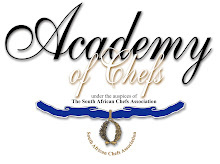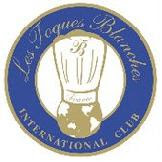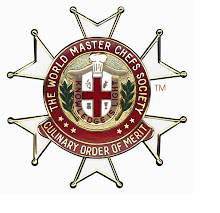| Gas Mark | Fahrenheit | Celsius | Description |
| 1/4 | 225 | 110 | very cool |
| 1/2 | 250 | 130 | - |
| 1 | 275 | 140 | cool |
| 2 | 300 | 150 | - |
| 3 | 325 | 170 | very moderate |
| 4 | 350 | 180 | moderate |
| 5 | 375 | 190 | - |
| 6 | 400 | 200 | moderately hot |
| 7 | 425 | 220 | hot |
| 8 | 450 | 230 | - |
| 9 | 475 | 240 | very hot |
ABOUT ME

- MANFRED MUELLERS
- ::MASTER CHEF ::FOOD CRITIC ::EDUCATOR ::LIFE-LONG STUDENT ::AUTHOR ::READER ::CONSULTANT ::TRAVELLER ::EPICURE ::PERFECTIONIST
OYSTERS SANS TABASCO
I love OYSTERS and I like my oysters 'Au Naturel'. To get that right takes great care, understanding and skill, and of course the presentation is vital.
The ideal is to take a walk along a pristine beach, pick a few oysters off the rocks, shuck and enjoy. So, when I ask for Oysters in a restaurant, I am asking for the vision, smell and taste a of that pristine beach, on a plate.
Crushed ice emulates the white breaking surf; salt - the smell of sea and sand; a twist of lemon - the cleansing sea breeze and a touch of finely ground black pepper (one turn of the grinder) - the hint of warmth from the sun.
Don't throw some oysters on a plate .... transport me!
'To master simplicity, master complexity.'
As for tabasco, I don't get it. I enjoy the condiment on a variety of dishes, but not here. Perhaps for those who like the feel of scorching sand on bare feet ... or a sunburn?
Apparently, artificial oyster beds were being formed in China long before they came to be cultivated by the Romans. That means that we have been enjoying the art of eating oysters for about 1900 years.
For a fascinating, all encompassing history of the Oyster:
image: wikipedia commons
Labels
Search This Blog
Thursday, October 8, 2009
HANDY OVEN TEMPERATURE CONVERSION CHART
Tuesday, October 6, 2009
SPRINGBOK MEDAILLIONS WITH RED CURRANT SAUCE
8x80 g Springbok medallions
50 g butter
50 ml olive Oil
Marinade:
30 g fresh rosemary, finely chopped
1 clove garlic, finely pasted
4 only juniper berries, finely crushed
5 g white milled pepper (6 turns)
75 ml olive oil
Sauce:
250 ml red wine
1 fresh pear, peeled and sliced
2 bay leaves
5g fresh rosemary
5g white milled pepper(6 turns)
100 ml apple juice
50 g red currant jelly
Beurre manie (as required) approx 50 g
Mis-en-place:
Pre-heat oven 180 C/ 350F
Method:
The Sauce:
Simmer the red wine with the pears, rosemary and pepper until reduced by half.
Strain, add the apple juice and red current jelly and simmer for approx. 5 minutes.
Check the sauces consistency and add some beurre manie to give the sauce a sheen.
Adjust flavour to suit your taste.
Combine the marinade ingredients in a bowl and marinade the springbok medallions in the fridge for about an hour.
Remove the springbok medallions from the fridge 5 minutes before cooking to bring the meat to room temperature.
Heat the olive oil/butter mixture and pan-fry (sear) the medallions for approximately two minutes on each side.
Place pan into a pre-heated oven for a short time (approx 2 minutes).
Remove from pan.
Nape/cover with the sauce just before serving.
Presented here with red cabbage on a poached apple slice, Cape gooseberries, field mushrooms, pearl onions poached in late harvest wine and Pommes Berny*. Garnished with a sprig of rosemary and fresh sage.
IMAGE: M.MUELLERS
Monday, October 5, 2009
CREME BRULEE
600 ml Cream
50g Castor sugar
4 Egg yolks
5 ml Vanilla essence
25g Brown sugar
Method:
Place cream in the top of a double boiler, gently bring to the boil.
Remove from heat and allow to cool.
Mix egg yolks, castor sugar and vanilla together in a bowl.
Add warm cream to the mixture, whisking constantly. (cream should be sufficiently cooled so as not to cook the egg at this stage otherwise you will have scrambled brulee!)
Place moulds, ramekins or brulee dishes into a deep tray or bain maire.
Pour mixure into moulds.
Carefully pour water into the tray, around the moulds to about half way up the sides.
Cover the whole tray with foil.
Place in oven at 160°C / 300° F for about an hour until set.
Remove from the oven and allow to cool. Chill overnight in the fridge.
Before serving sprinkle with brown sugar and glaze under grill/salamander or a blowtorch (if you must!) until medium brown.
Presented here with strawberries halves, lavender flowers and violet crystallized pansy flowers and topped with spun sugar.
IMAGE: M MUELLERS
Thursday, October 1, 2009
MALVA PUDDING
The Pudding
250 gr Castor sugar
30 gr Butter
2 Eggs
150 ml Milk
15 ml Apricot jam
40 gr Grated chocolate
20 gr Cacoa powder
280 gr Flour
5 ml Bicarb of soda
pinch of Salt
The Sauce
250ml Cream
125ml butter
125ml sugar
125ml water/Orange juice/Sherry/Brandy
Kiwi fruit, crushed,roasted nuts and poached apricots for presentation.
Method :
The Pudding
Beat the eggs, add sugar until the mixture is light and fluffy.
Mix in the jam.
Sieve the dry ingredients twice.
Melt butter and add milk.
Fold the dry ingredients into milk mixture
Fold this wet mixture into the egg mixture.
Pour mixture into the moulds.
Bake at 180 C for 35-40 minutes.
The sauce
Boil sugar, butter and water/orange juice/sherry/brandy ( 60ml water plus any combination of ) until syrup forms. Remove from heat, add brandy. Pour hot syrup over just baked pudding. It should be completely absorbed.
Custard to serve
600ml Milk
6-8 Egg yolks (depending on the size of eggs)
50g Sugar
1-2 Vanilla pods
Split the vanilla pods lengthways
Scrape out the vanilla seeds.
Bring milk almost to the boil, remove from the heat and add the vanilla seeds and pod(s).
Allow to stand for 15 minutes to infuse
Place the egg yolks and sugar in a bowl, beat until thick and creamy.
Remove the vanilla pod(s) from the milk and slowly beat into the egg mixture.
Place in a heavy based saucepan and cook over a low to medium heat (do not allow to boil) , stir constantly, until the custard thickens.
MM.
IMAGE: M.Muellers
Thursday, September 24, 2009
PUFF PASTRY
125 gm butter, coarsely chopped
2 x 250gm blocks of butter, each thinly sliced lengthways into 10 slices
250 ml Iced acidulated water - add juice of half a lemon to 1 cup of water
Using a food processor, process flour, chopped butter and a pinch of salt until fine crumbs form.
Roll out pastry on a floured surface to 25cm x 60cm, with short edge facing you.
Arrange half the butter slices in a single layer over middle third of pastry, then fold down top third of pastry.
Arrange remaining butter slices over folded pastry, fold up bottom third.
Roll out pastry to 25cm x 60cm with short side facing you, fold down top third, then fold up bottom third.
SAUCE CARAMEL
250 ml Cream
250 g Sugar
150 ml Water
Method:
Bring cream to the boil
In a separate, very clean, dry pot mix the sugar with the water and boil until it is a deep golden brown.
Add the caramel to the cream, slowly - be cautious here!
Whisk gently and return to heat until all the caramel has dissolved.
Once cooled, store in the refrigerator.
MM.
Tuesday, September 15, 2009
ON OLIVE OIL
One of the reasons we use Olive Oil, is to reap the health benefits, but large scale commercial enterprises offer a product almost devoid of taste and nutrition. It is very important that Olives be picked ripe, and optimally pressed within 48 hours, and then stored correctly.
- OLIVE OIL ADOPTS OTHER AROMAS EASILY, SO STORE MINDFULLY.
- OLIVE OIL SHOULD STORED, LIKE WINE, IN A COOL AND DARK PLACE.
- IDEAL TEMPERATURES for storage 10-12 DEGREE CELSIUS
- OLIVE OIL IS BEST STORED IN DARK BOTTLES
- IF OLIVE OIL IS STORED TO COOL IT CREATES FLAKES AND LOSES SOME OF IT'S DELICATE FLAVOUR.
- DON’T OVERHEAT OLIVE OIL - THIS WILL CAUSE IT TO LOSE FLAVOUR AND NUTRIENTS VERY QUICKLY. WARM OVER GENTLE HEAT, OR ADD AFTER COOKING.
- AFTER USE SEAL THE BOTTLE - INTRODUCING OXYGEN CAUSES DETERIORATION.
- ONLY VIRGIN AND EXTRA-VIRGIN OILS ARE PRODUCED SOLEY BY MECHANICAL MEANS. BE AWARE THAT THE TERMS 'PURE', '100%', 'LIGHT' MOST LIKELY REFER TO CHEMICALLY REFINED OILS. HOWEVER, EVEN THE TERMS 'EXTRA-VIRGIN' AND 'VIRGIN' ARE OPEN TO MISUSE.
- 'HAND PICKED' GIVES AN INDICATION THAT RIPE OLIVES ARE BEING USED, NOT UNRIPE OR OVER-RIPE ( and possibly mouldy!)
Thursday, September 10, 2009
STEAK TARTARE
Any old ground beef with a raw egg on top is passed off as Steak Tartare these days. I even suffered the misfortune of being presented with the raw ingredients and expected to 'cook' it myself. Really!! Would you ask a costumer to prepare anything other dish themselves?
This dish is supposed to reflect, in a more sophisticated fashion the raw steak which, it is said, Tartar horseman placed between the saddle and their mount's back to be pounded and crushed during a fierce ride. The modern version is commonly assembled and prepared from the gueridon, ( a small round table).
It is true that there are different versions, from different countries. What I am talking about is what is being presented as a sophisticated dish. The steak in Steak Tartare must be that .... fillet of beef, not mince, not ground beef, not a mixture. The steak must be chopped into a fine dice. This is the art in it. There is a huge difference between chopped and minced, in both taste and texture.
Ingredients: Mise en place
Finely chopped raw fillet steak
Finely chopped raw onions and onions rings
Anchovy fillets
Capers
Other flavourings to choice - e.g. Tabasco or Worcestershire sauce
Chopped hard boiled egg
Virgin Olive Oil
Vinegar
Brandy
Salt
Milled pepper to taste
Cayenne pepper (optional)
Raw egg
These ingredients should be chilled or very cool.
Tartare Steak is simply the pounded raw meat seasoned, lightly dressed with oil and vinegar, and then shaped before the guests, manipulating into a neat roundel with two forks.
Chopped onions may be incorporated or served as an accompaniment. Commonly a small well or depression is made on the top of the shaped steak, to receive a garnish of raw egg yolk.
Final garnish may include onion rings, anchovy fillet in julienne strips, capers and chopped hard boiled egg (yolk and white).
Oil and vinegar and other condiments are placed on the table.
A green salad is customary accompaniment, together with thinly sliced black bread and butter ( Danish rye or pumpernickel ).
Tuesday, September 8, 2009
SOMETHING I PREPARED EARLIER ....
Ingredients: 4 portions
4 x 200 g fresh salmon fillet
4 g salt
4 turns white milled pepper
5 g fresh ginger grated
5 ml teriyaki sauce
40 g butter
40 ml olive oil
Asian green, olive oil and balsamic vinegar for garnish
Mise-en-place:
Horseradish mash, creamed spinach (recipes en route)
Method:
Season salmon with salt, mill pepper, ginger and teriyaki sauce
Heat the olive oil and butter in a pan
Place salmon portion into hot oil/butter mixture, just to seal
Place in pre-heated oven(200 degree C) for about 4 minutes
Remove salmon from pan and dry on a paper towel
Place on piped mashed potatoes and creamed spinach
Top salmon with Asian greens and a few drops of olive oil and balsamic vinegar
Enjoy!
IMAGE M.Muellers
Sunday, September 6, 2009
JEAN ANTHELME BRILLAT-SAVARIN

Those persons who suffer from indigestion, or who become drunk, are utterly ignorant of the true principles of eating and drinking.
Brillat-Savarin (1755-1826)
In 1996, I did a post graduate course through the University of Adelaide, Australia. My thesis was to 'Examine the validity how Gastronomy, (as a practice), has been presented as a middle path reconciling health and pleasure and, to highlight both contemporary and earlier writers on Gastronomy'.
His is a very interesting perspective and I would encourage students of Gastronomy and the Culinary Arts to get a copy of Brillat-Savarin's 'Physiologie du Gout'.








